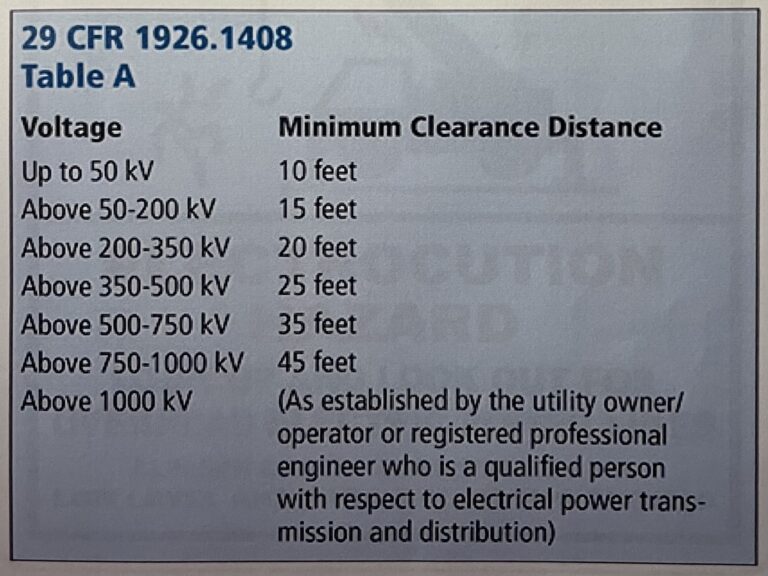Crane Safety and Overhead Powerlines
The Importance of Crane Safety
Crane safety is important…
especially when overhead power lines are involved! Crane accidents can be deadly. In a study spanning four years, 312 people lost their lives in crane-related incidents. Surprisingly, only 30 of these victims were crane operators.
The other individuals were engaged in various tasks near or on the crane, including laborers, riggers, welders, ironworkers, carpenters, or truck drivers. Alarmingly, 72 people, or 23%, lost their lives due to contact with energized overhead power lines.Guiding the load, walking it in a pick-and-carry operation, or inadvertently contacting the wire rope when the crane touched the power line were common scenarios leading to electrocution.
Take Precaution
Crane safety is important, especially when working near overhead power lines. Everyone involved must stay vigilant and cooperate to ensure safe operations.The visibility of power lines can deceive crane operators, making it challenging to judge their proximity accurately. Collaborative efforts among workers are crucial for maintaining safe distances between the crane, the load, and overhead power lines.
Pre-planning
Is essential to mitigate risks associated with energized power lines. Before the crane arrives, carefully assess the work area, identify potential hazards, and establish safe zones.Always treat overhead lines as live until confirmed otherwise by the utility company. If minimum clearance cannot be achieved, the line must be de-energized to ensure safety.
Exercise caution when maneuvering the crane’s boom, particularly in congested or poorly visible areas. Consider enlisting additional help for better visibility and coordination during crane operations.
Marking off danger zones with visual indicators like fluorescent lines or flags helps enhance safety awareness among workers.
Avoid storing materials beneath power lines that need access via crane. This reduces the risk of accidental contact between the load and the energized lines.
In the event of contact between the crane and power lines, prioritize personal safety. If on the crane, remain inside if possible. If evacuation is necessary, jump clear of the crane, keep legs together, and quickly move away from the area.
Staying alert is crucial in crane operations near power lines. Remember, when cranes clash with power lines, the winner is always the power. Image below shows the minimum clearance distance according the OSHA’s guid lines.
Learn more blue collar careers HERE
Watch and learn more HERE

Discover Your Future Career
Take a Free Trade Quiz

At Blue Print, our commitment to excellence has earned us the trust and endorsement of contractors across various industries.
Quick Links
Get in Touch
- austin@bluecollaredu.com
